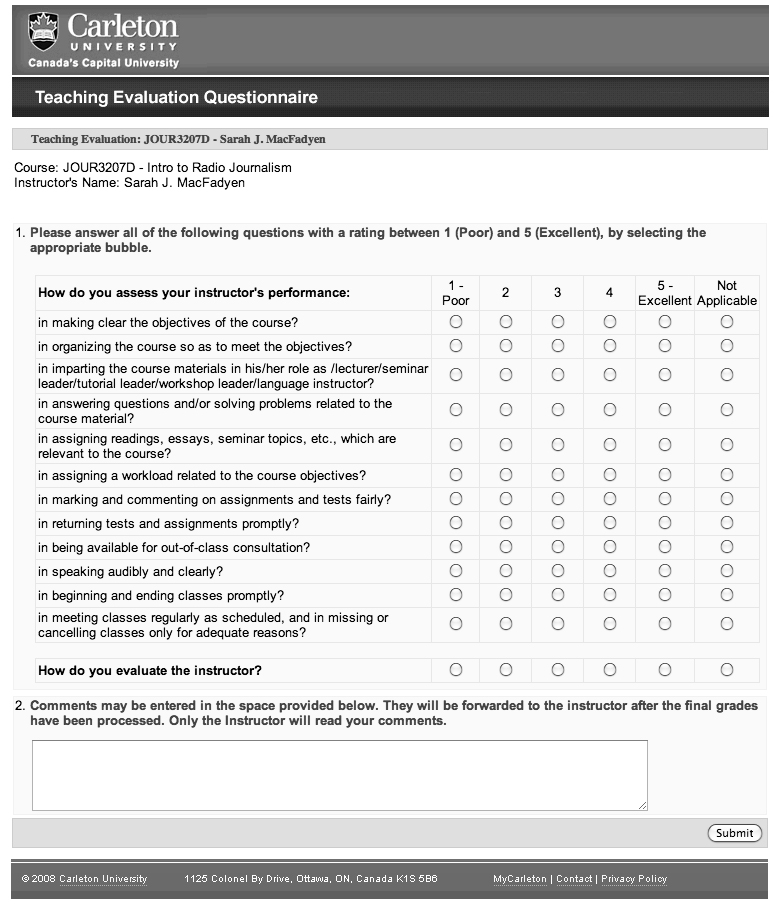Carleton is increasing its use of online teaching evaluations for professors and instructors, rather than the paper versions that take up more resources.
This term, 85 per cent of courses–or about 23,000 students–will fill out evaluations online, according to Bruce Winer, associate director of the Office of Institutional Research and Planning.
There was an eight per cent dip in participation rates on average in last winter’s online pilot, according to a report on the pilot. The pilot involved 7,398 students and was conducted to make sure there weren’t any huge differences between the online and paper systems.
The report showed that a small dip in the response rate will not hugely affect the average.
“If you go online from a paper-based capture approach where you have that group of people who have nothing else to do [in a classroom], then there’s some fall in the response rate,” Winer said.
“If you don’t answer, you’ll get a few more [emails] until you answer,” Winer said with a laugh.
For instructors who want to make sure they get a full feedback, “teachers should be given a choice between doing in-class and paper,” said Chinnaiah Jangam, a Carleton history assistant professor.
“Students forget . . . they have so many deadlines to meet,” Jangam said.
Currently, contract instructors cannot opt out of the online evaluation because their collective employment agreement doesn’t give that leeway, said Dan Sawyer of CUPE 4600, the union represents 2,500 contract instructors and teaching assistants at Carleton.
The agreement is up for renewal in August. Possible discussion might include giving the opt-out option and lowering the criteria for what makes a good evaluation score.
Sawyer said online evaluation scores tend to dip in the beginning. To ensure job security, CUPE would like to make score “3” an acceptable score temporarily.
Full-time professors are represented by the Carleton University Academic Staff Association (CUASA).
Currently CUASA members can choose whether to have course evaluations done online or by paper. Winer said about a quarter of them opted for paper this term.
Having paper evaluations includes printing out 160,000 evaluations every year, shipping around from one building to another and scanning the evaluations. It’s hard to measure the full cost, but the printing costs about $10,000, according to Winer.
Switching the evaluations online has become a bigger issue for Canadian universities in the past five years, Winer said.
More American universities are doing evaluations online, Winer said.
In Canada, faculties tend have more control because they are unionized.
“In the States, some places just impose, they don’t have to talk about it, they can do it,” Winer said.






